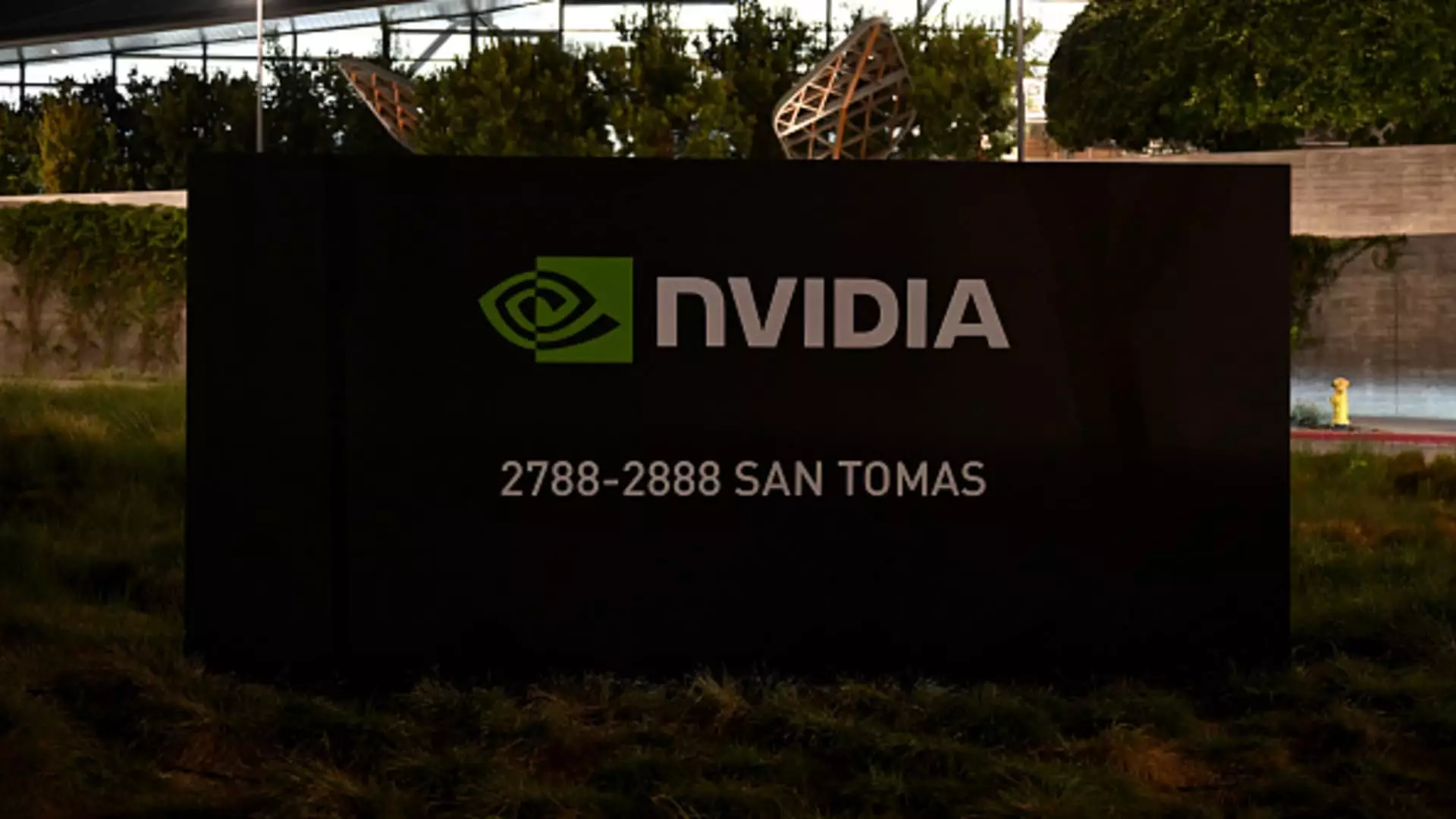The recent remarks by Nvidia’s CEO, Jensen Huang, during the Goldman Sachs Communacopia + Technology Conference, have undeniably cast a spotlight on the burgeoning field of artificial intelligence (AI). Huang’s assertion that we are amidst a “computer revolution” marks a pivotal moment in the narrative surrounding AI, particularly generative AI, which he emphasizes as more than just a tool; rather, it is evolving into a vital skill. Such a perspective not only invigorates the market but underscores the burgeoning role that AI is set to occupy in various industries.
Huang’s confidence in the transformative potential of AI highlights an opportunity he anticipates in data centers, initially valuing it at a staggering $1 trillion. His statement propelled Nvidia’s stock upward by over 8%, reflecting a collective sigh of relief from a market that has been feeling the strain of a prolonged wait for significant profit from AI investments. Such financial optimism bolsters the belief among portfolio managers that the current market dynamics will foster continued growth over the next few years.
Huang’s insights reverberate beyond Nvidia, extending to the broader semiconductor sector, where companies like Advanced Micro Devices (AMD), Marvell Technology, and Broadcom have experienced swift gains. With a collective rally in excess of 10% this week, these firms are viewed as critical players in the ongoing expansion phase catalyzed by generative AI advancements. John Belton, a portfolio manager at Gabelli Funds, articulated the optimism surrounding manufacturing capabilities, particularly in light of Nvidia’s collaboration with Taiwan Semiconductor Manufacturing Company. This sentiment indicates a robust demand trajectory, leading to renewed investor enthusiasm.
In addition to the well-established players, a plethora of emerging firms is positioning themselves to capitalize on the AI boom. This landscape beckons investors to explore opportunities beyond Nvidia, propelling confidence in companies involved in hardware production, such as Micron Technology, renowned for its memory solutions, which are expected to benefit significantly from the rising need for data processing capabilities.
The Role of Established Giants
Apple’s recent launch of the iPhone 16, which features impressive AI enhancements—termed Apple Intelligence—further complicates the marketplace landscape. While some analysts appear skeptical about Apple’s upgrade cycle potential, CFRA’s Angelo Zino maintains a long-term bullish outlook for the tech giant, asserting that it will emerge as a leader in AI-driven consumer devices. Zino anticipates a pivotal shift as users begin adopting advanced innovations like the Vision Pro headset, positioning Apple favorably within the AI sector.
Furthermore, companies like Dell hold promise as key players in the enterprise domain, with expectations of improved margins and growth into the new fiscal year. This suggests a mosaic of futures vying for dominance in the AI space, where traditional tech giants and new entrants are articulating their strategies for long-term success.
However, amid the enthusiasm lies a cautionary tale. The rapid proliferation of AI-related companies raises parallels to the dotcom bubble of the early 2000s—a caution echoed by Mark Malek, Chief Investment Officer at SiebertNXT. He underscores the importance of discerning which companies are genuinely driving innovation versus those merely riding the coattails of a trend. Notably, Malek emphasizes that the most significant breakthroughs in AI may be occurring quietly in private markets, away from the spotlight typically enjoyed by publicly listed companies.
Technology titans like Microsoft, Alphabet, and Amazon continue to serve as major beneficiaries of the AI surge, yet they must remain vigilant in the face of emerging competitive pressures. The observation that private companies could yield critical advancements signals that the investment landscape is fraught with volatility and unpredictability, making due diligence essential for stakeholders.
The AI sector, invigorated by Huang’s remarks, is undoubtedly on the verge of transformative growth, but it is vital for investors and industry participants to navigate this complex landscape with both enthusiasm and caution. As the market settles into a new equilibrium, the diverse strategies employed by established companies, emerging players, and traditional tech titans will shape the future of AI, signaling an era where strategic investment and innovation are paramount. The journey ahead is steeped in potential but requires measured approaches to ensure sustainable success.


Leave a Reply